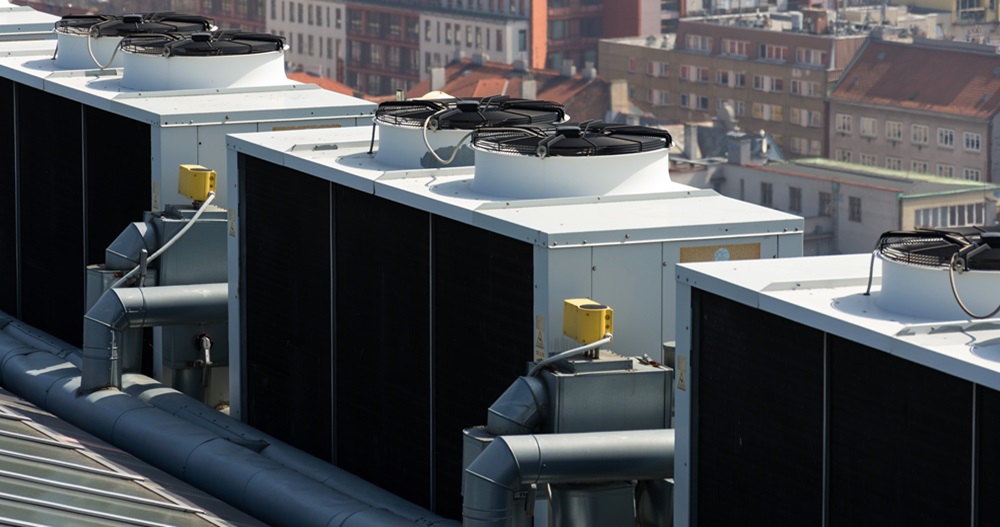Predictive Maintenance and Performance Optimization

1. Introduction: The Shift Toward Smart HVAC Systems
The HVAC industry is undergoing a quiet revolution.
As buildings become smarter and more connected, the traditional “set-and-forget” model of heating and cooling is giving way to data-driven, self-optimizing systems.
At the center of this transformation lies the Variable Refrigerant Flow (VRF) system — an advanced technology capable of adjusting its performance dynamically to match real-time thermal loads.
Modern solutions such as the AeroCoil AC-V Pro VRF system now go beyond efficient climate control.
They incorporate intelligent diagnostics and predictive maintenance to ensure not only comfort and efficiency but also long-term reliability and operational transparency.
2. What Are Intelligent Diagnostics in VRF Systems?
Intelligent diagnostics refer to the integration of sensors, control logic, and data analytics to continuously monitor system performance and detect anomalies before they become failures.
In VRF systems, this involves tracking multiple parameters in real-time, such as:
Compressor speed and current draw
Refrigerant pressure and flow rate
Indoor and outdoor coil temperatures
Expansion valve position
Communication signals between indoor and outdoor units
When these data points are analyzed by the system’s onboard microprocessor or cloud platform, the control system can:
Identify inefficiencies or abnormal conditions
Automatically adjust operating parameters
Notify operators or service engineers through alerts
Essentially, the system “thinks” about its own operation — turning raw sensor data into actionable maintenance insights.
3. From Reactive to Predictive Maintenance
Traditional HVAC maintenance relies on reactive or scheduled approaches:
Reactive: Fixing breakdowns after they occur.
Scheduled: Performing periodic checks regardless of actual system condition.
Both models are inefficient — reactive maintenance leads to downtime and costly repairs, while scheduled maintenance can waste time and resources.
Intelligent diagnostics enable a third, superior model: predictive maintenance.
By continuously analyzing trends in system performance, the AeroCoil AC-V Pro can detect early signs of wear, refrigerant leakage, or compressor imbalance.
It then issues early warnings, allowing technicians to intervene at the optimal time — not too late, not too early.
Benefits of predictive maintenance include:
Reduced unplanned downtime
Extended equipment lifespan
Lower service costs
Enhanced occupant comfort (no surprise failures)
4. The Technology Behind AeroCoil’s Diagnostic Intelligence
The AeroCoil AC-V Pro VRF system integrates a multi-layer diagnostic architecture designed for both on-site and remote management.
Key components include:
High-precision sensors: Measure temperature, pressure, and electrical load across critical points.
Embedded microcontrollers: Process raw data locally for real-time adjustments.
Cloud-based monitoring platform: Aggregates long-term operational data for performance benchmarking.
Machine-learning algorithms: Identify patterns that precede performance degradation.
This hybrid structure means the system is continuously self-monitoring — optimizing its operation minute by minute while also learning from historical trends to predict future issues.
5. Intelligent Control and Adaptive Optimization
Diagnostics don’t exist in isolation. In AeroCoil’s VRF systems, they are tightly integrated with intelligent control algorithms that fine-tune performance dynamically.
When the diagnostic system detects even a slight inefficiency — say, a drop in heat exchange efficiency due to coil fouling — it can automatically:
Adjust compressor frequency
Rebalance refrigerant flow between zones
Optimize fan speed or expansion valve opening
This closed-loop feedback ensures consistent comfort and minimal energy waste, without requiring manual intervention.
The result is a system that’s not only reactive to problems but proactively adaptive to maintain optimal > طراحی سایت طرح گندم: conditions.
6. Real-World Benefits for Building Operators
For building owners, facility managers, and service contractors, intelligent diagnostics deliver tangible advantages that go far beyond traditional monitoring systems.
Operational benefits:
Real-time visibility: Access to live data via web dashboards or mobile apps.
Remote maintenance: Technicians can perform diagnostics without being physically on-site.
Energy analytics: Identify zones or units consuming excessive power.
Automatic reporting: System-generated maintenance logs and performance summaries.
These tools enable smarter decision-making and allow maintenance teams to prioritize issues based on severity — a major step toward data-driven facility management.
7. Case Example: Mixed-Use Building Efficiency
Consider a large mixed-use building with retail, office, and residential zones.
Each area has different occupancy patterns, comfort expectations, and load profiles.
With AeroCoil’s intelligent diagnostic system:
The control platform continuously tracks load variation across zones.
If one floor shows abnormal compressor cycling, the system flags it as a potential control-valve issue.
The maintenance team receives an alert before comfort levels are affected.
This proactive insight reduces downtime, preserves tenant satisfaction, and ensures that energy use remains balanced across all zones.
8. Integration with Building Management Systems (BMS)
Modern facilities often use centralized Building Management Systems to oversee HVAC, lighting, and security.
AeroCoil’s VRF platform supports BMS integration through open communication protocols like BACnet or Modbus.
This means the diagnostic data can be shared across the building ecosystem — allowing operators to view HVAC performance in context with other systems.
Integration advantages:
Unified dashboards for monitoring and control
Automated energy balancing across multiple systems
Easier compliance with green building certifications
By merging intelligent diagnostics with centralized management, AeroCoil enables true smart-building interoperability.
9. Sustainability and Long-Term Value
Beyond operational efficiency, predictive diagnostics support environmental sustainability.
Lower energy consumption: Optimized operation reduces overall power draw.
Reduced refrigerant loss: Early leak detection minimizes emissions.
Extended equipment life: Less wear means fewer replacements and less material waste.
Improved lifecycle ROI: Lower total cost of ownership (TCO) over decades.
By combining intelligent diagnostics with inverter-driven efficiency, AeroCoil AC-V Pro systems contribute directly to ESG and LEED objectives for modern developments.
10. The Future: AI and Autonomous HVAC Systems
The next frontier for VRF diagnostics is AI-driven autonomy.
With the rise of machine learning, AeroCoil and other HVAC innovators are developing systems capable of:
Predicting building load patterns based on occupancy and weather data
Automatically adjusting settings for comfort and energy optimization
Performing self-healing routines (minor recalibrations without human input)
In the near future, these systems will act as fully autonomous climate managers — delivering ideal comfort conditions with minimal human oversight.
11. Conclusion: Smarter Systems for a Smarter World
Intelligent diagnostics mark a major step forward in how VRF systems are designed, maintained, and optimized.
By transforming raw data into predictive insights, AeroCoil’s AC-V Pro platform ensures that every component — from compressor to controller — operates at peak performance.
The outcome is a climate control solution that is:
More reliable through predictive maintenance
More efficient through adaptive optimization
More sustainable through reduced energy and material waste
In an industry where downtime and inefficiency can be costly, AeroCoil’s intelligent diagnostic technology sets a new benchmark for what HVAC systems can achieve — making buildings not just comfortable, but truly intelligent.


